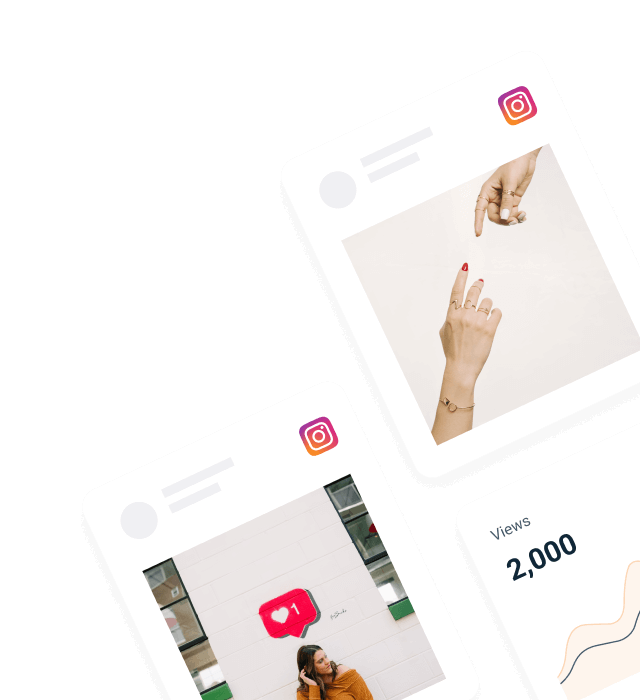Social Media for nonprofits is more critical than ever. It’s a new age of media where print is dying, people are cutting the cord, and information can travel around the world almost as fast as the speed of light. In this new age social media has become a medium where people can share ideas, find others with common interests, protest against injustice, and quench their thirst for knowledge. A social media presence for nonprofits is free, and can extend their reach in ways not possible before the information age. In other words, nonprofit organizations and social media go together like peanut butter and jelly, because social media has become the perfect place for charity to flourish.

Benefits of Social Media Marketing for Nonprofits
There are many key statistics that illustrate success for nonprofit social media strategies. These nonprofit social media metrics can translate to increased donations, more supporters, more brand awareness, and much more. Some of the main social media metrics that could impact your nonprofit’s success are:
- Followers: The number of people following your non-profit on a social channel. The more this number grows, the more potential your nonprofit has to garner more impressions.
- Engagement: This can be comments, likes, shares, upvotes, retweets, pins, etc. Engagement is an essential metric to monitor. Engagement on with your nonprofit can be huge, because each comment, like or share represents a person engaging with your brand and opening a door for all of their followers to learn more about your organization as well.
- Mentions: Mentions should always be part of any social media plan for nonprofits. When your nonprofit brand is mentioned either through a direct mention (using the @ symbol) or using a hashtag, this usually becomes a great source of PR for your brand, especially if the person or brand mentioning your nonprofit has a lot of social media clout.
When these social media metrics start to add up, your non-profit should also begin seeing an increasing trend for your other key KPIs. According to Nonprofits Source, “55% of people who engage with nonprofits on social media end up taking some sort of action.” Social Media presence for nonprofits can be quantified using these metrics, and when you make changes to your strategy, you should always monitor its impact on your metrics.

Social Media Best Practices for Nonprofits: Creating a Social Media Strategy
So how can nonprofits best use social media? Promoting charity through social media isn’t as simple as firing off a few Tweets and calling it a day. Developing a solid nonprofit social media strategy takes commitment and usually some help; whether that help comes from using social media tools for nonprofits, putting together an internal team, or hiring outside help such as a social media marketing agency.
Your main focus should be on a few key areas of your nonprofit social media marketing:
- Creating your social media accounts: The first thing to keep in mind with your nonprofit’s social media accounts is to make sure your persona is consistent across each social media platform. That means having a similar account name, similar imagery (it doesn’t have to be exactly the same, just cohesive with your current campaign or brand style), and a similar voice in your social media posts.
- Growing your social media following: One of the best ways to kick off the growth of your nonprofit’s social media follower count across networks is by taking advantage of your existing supporters and partnerships. These are people who already have your back and support your cause, so they are likely more than happy to spread the word about your nonprofit’s social media accounts. Partners like brands, important figures, and other organizations have the ability to share your nonprofit social media accounts with their followers, so always be sure to build as many bridges as you can.
- Maintaining your social media posting schedule: It can feel a bit daunting creating content to post on three, four, six or more social media channels. Some nonprofits post on their social media accounts once a day, others every other day, and a few post once a week or so. You need to find the right balance for your nonprofit, your nonprofit’s community, and your available bandwidth. Having an extra hand to help out with creating and scheduling the posts for your nonprofit social media accounts can come in handy.
- Engaging with your followers: Another formidable nonprofit social media task can be replying to comments, sharing follower/partner posts, participating in online discussions, and other forms of social media engagement. As your nonprofit social media presence starts to grow, addressing each comment, discussion, and mention of your brand can become quite the undertaking, but engagement is one of the most crucial parts of a nonprofit social media strategy. Social media engagement works to further humanize your nonprofit, creates an element of authenticity and compassion for your organization, and helps your followers (and your followers’ followers) feel noticed and appreciated.
- Leveraging your partnerships and potential influencer relationships: It was mentioned above, but relationships such as partnerships with brands or organizations and social media influencer connections are critical for taking your nonprofit social media strategy to the next level. Seek out influencers who believe in the same principles that as your nonprofit. Chances are if they feel strongly about the cause, they will be happy to work with you. Other nonprofits can be great partners to have as well. One successful example of this strategy in action is GlobalOwls, an organization that has nonprofit partners helping reinforce their mission to reduce plastic pollution. The best part is, as a nonprofit organization, you (for the most part) don’t have to deal with the idea of other nonprofit organizations being competitors. Anyone who is a supporter of your organization for Kitten Coding Education could also feel strongly about Music Therapy for Garden Plants. So having a partnership with another nonprofit organization means that both parties can benefit from sharing with their network of followers. Don’t be afraid of collaboration!
Best Social Media Platforms for Nonprofits
Not all networks are the right fit for every nonprofit social media strategy, but many of them are a good fit for just about any brand. Decide which platforms best fit your nonprofit’s brand image and your followers interests and desires. The ideal platforms for this will vary from organization to organization, but the following are some of the best social media outlets for nonprofits.
- Facebook: Facebook is a staple social media network, especially for businesses such as nonprofits. Facebook users mainly use their Facebook account to keep in contact with friends, share links/posts they enjoy or support, share and save photos and videos, and to learn more about other people, brands, and organizations.
- Twitter: Twitter’s design is built around users sending and reading messages known as tweets. Tweets are text-based messages with a character limit that can also incorporate website links, pictures, GIFs, and videos. For the most part, people use Twitter to share their personal status or thoughts, share and view news, information, other’s opinions, professional information, trending topics, and more.
- Instagram: Instagram, owned by Facebook, is a realtime photo, GIF, and video-sharing social network. Users can upload photos and videos as well as apply special image/video filters to their posts. Instagram users enjoy the platform because of its captivating images and videos and they mainly use it to get an inside look at the lives of their friends, family, and other popular figures.
- YouTube: YouTube, owned by Google, is a video hosting and discovery platform. You might be surprised to know that it also serves as the world’s second largest search engine, which is why you see YouTube results show up in Google search results. YouTube videos are used to learn, troubleshoot, view news, laugh at funny content, entertain, and more.
- LinkedIn: A professional social networking site, LinkedIn offers a chance to find groups of people with shared professional interests and/or goals and connect with them. This is also a great platform for sharing more about the inner workings of your nonprofit’s organization.
- Pinterest: A social media bookmarking platform that helps people organize, discover, and curate various topics, videos, and images they like. The Pins on Pinterest can be anything from website links, PDFs, image files, videos, infographics, and more.
- Reddit: A community forum-based social media network, Reddit works on strict rules to help people find and connect with others that have the same interests or needs. Subreddit communities usually have very specific rules for posting and engaging with threads so be sure and familiarize yourself with proper Reddiquette before trying your hand on the platform.

The best nonprofit social media strategy is the one that meshes seamlessly with your nonprofit’s brand and goals. Sadly nonprofit social media strategies aren’t a one-size fits all solution but given the proper time and planning, you can foster a social media community that is fired up to rally around your cause. Juicer is one of the best social tools for nonprofits– use it to create beautiful social walls that can be embedded on any site or used at events. With a free plan forever, organizations of any size can utilize our powerful social walls.




